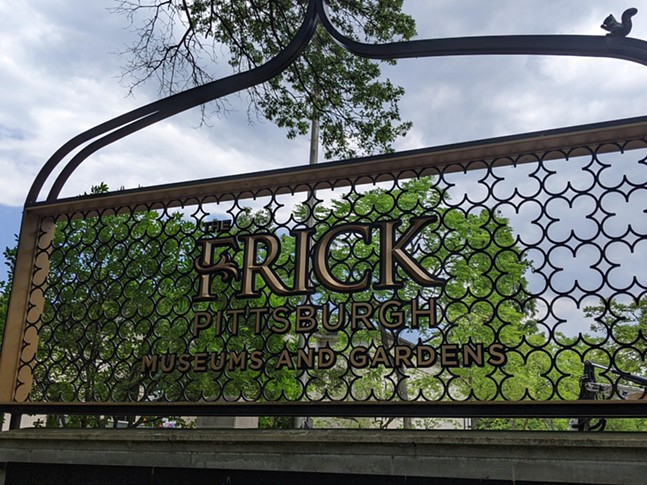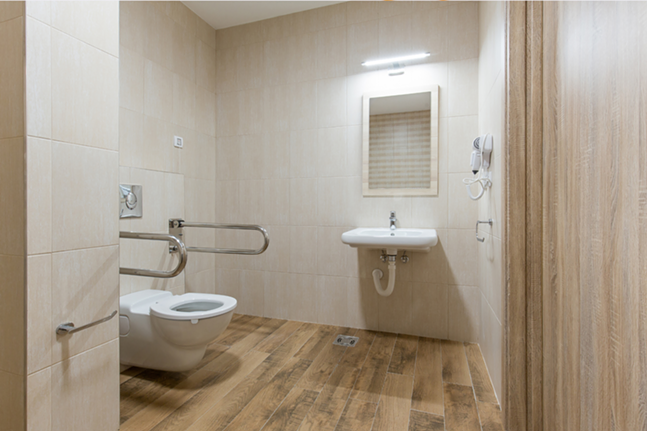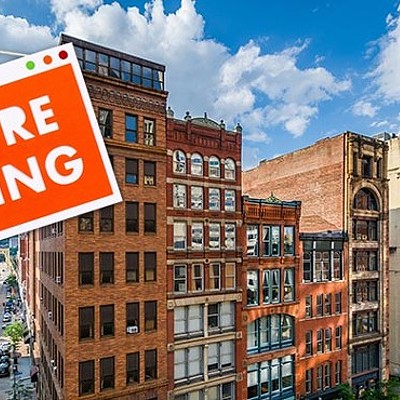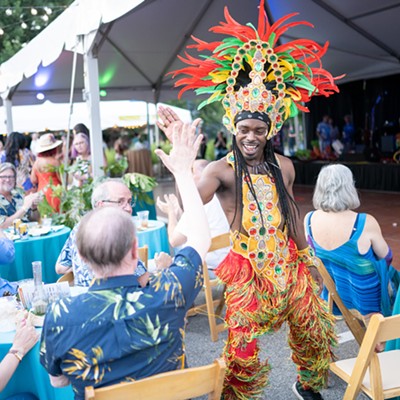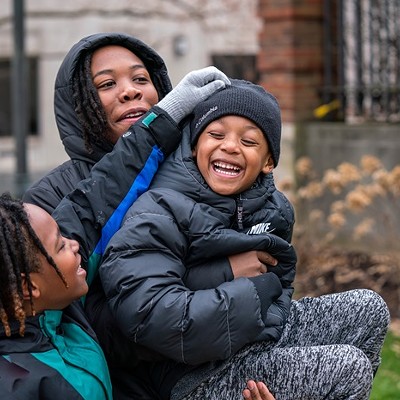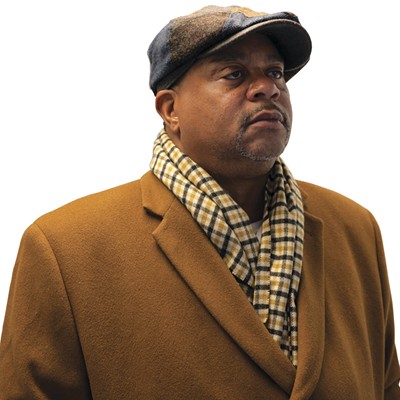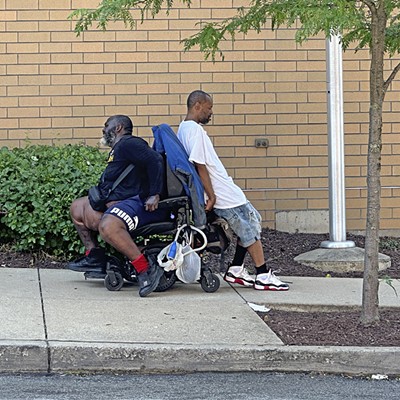The newly renovated restroom includes a spacious changing table suitable for both children and adults, grab bars for additional support, and an open floor plan for freedom of mobility. The Frick was further made accessible this spring with the installation of a power-assist mechanism to open the door at the museum’s main entrance.
Why aren’t more public spaces adding or updating ADA restrooms?
Upon receiving this information, as a person with a physically disabled parent, I couldn’t help but wonder: in 2024, why aren’t there ADA-accessible bathrooms in every facility, from museums to small businesses and beyond? What is taking so long?In short, the answer comes down to funding. While there are government grants for ADA accessibility, according to Accessibility Checker, those funds are limited to around $5,000 for most businesses. An undertaking on this scale costs far more, and for small businesses and nonprofits, making necessary changes may not be financially feasible.
Elizabeth Barker, executive director of The Frick Pittsburgh, told Pittsburgh City Paper that she made accessibility her top priority, and then the necessary funding for The Frick’s accessibility project came from the right people at just the right time. The accessible restroom was made possible by funding from the Allegheny Regional Asset District and the PNC Charitable Trusts.
Barker’s vision is for people of all abilities to enjoy arts and culture without roadblocks. “By helping to ensure that everyone who comes to our site feels valued and expected, our ongoing site accessibility improvements signal the Frick’s warm welcome to all visitors,” says Barker. “We want our guests to be able to enjoy their visits fully, undistracted from the experiences with art, history, and nature that we are so excited to share with our community."
Are some historic spaces exempt from complying with restroom accessibility?
It’s been 47 years since the late Judy Heumann, the “Mother of the Disability Rights Movement" led the charge for disability rights in a sit-in protest at the UN plaza in San Francisco. Along with nearly 100 other people with disabilities, Heumann demanded that reasonable accommodations be made for disabled people including curb cuts, handrails, and ramps in federal buildings, and access to public schools and other public spaces including, but not limited to, accessible public restrooms.
Since 1977, the ADA has updated accessibility laws approximately every 10 years, with the last update formalized in 2010 and then fully enforced in 2012. A big question, particularly when it comes to historic buildings, is whether the building may be “grandfathered in,” not requiring accessibility updates.
The term “grandfathered in” harkens back to the Jim Crow era and was used as a discriminatory tactic to deter Black people from voting. Now, the term is used as an excuse not to update facilities, discriminating against people with disabilities.
There is, in fact, no “grandfathering in” of spaces, and all must comply with at least the minimum of the most recent ADA requirements, according to the Disability Rights Education & Defense Fund: “Title III of the Americans with Disabilities Act, which applies to places of public accommodation, does not contain a ‘grandfather clause.’ In other words, just because a place of public accommodation is old or was built before the ADA was enacted does not mean that the property is exempt from the Act’s accessibility requirements.” Any exceptions for historic spaces, therefore, are limited.
What is the penalty for not being ADA-compliant?
Penalties for businesses that do not have ADA-accessible facilities include fines of up to $150,000. Additionally, a person with a disability may opt to sue a business or public building for not meeting ADA requirements for accessibility. Now, whenever a new commercial building is proposed, an inspector must go in and check for ADA compliance. However, older buildings that are not pursuing updates are not being inspected for compliance, and there's no formal agency checking on existing structures. Still, a person with a disability can bring suit against a business if that business does not provide accessible access or restrooms.
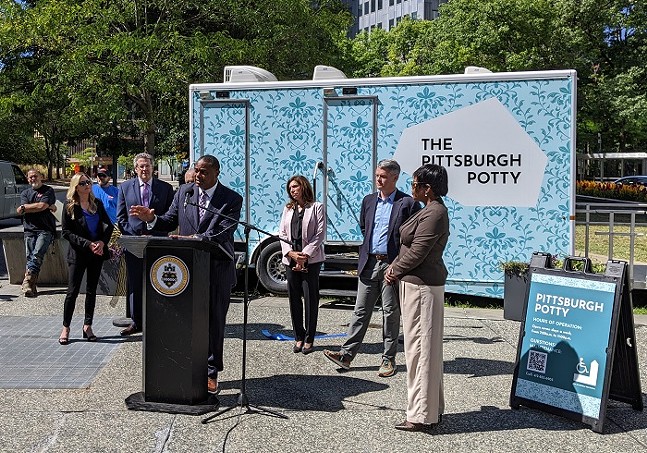
At The Frick Pittsburgh, the new accessible restroom and power-assist museum door were celebrated with a ribbon-cutting event on Saturday, May 4, 2024. These updates to the 55-year-old art museum follow other recent projects to expand accessibility at the Frick.
I hope that all buildings in Pittsburgh built before 1977 that have not yet updated their facilities for the 12% of our population with physical disabilities do so soon — not just for the existing persons with disabilities, but because the disability community is a marginalized group that a person can enter at any time of their life regardless of age or health.

